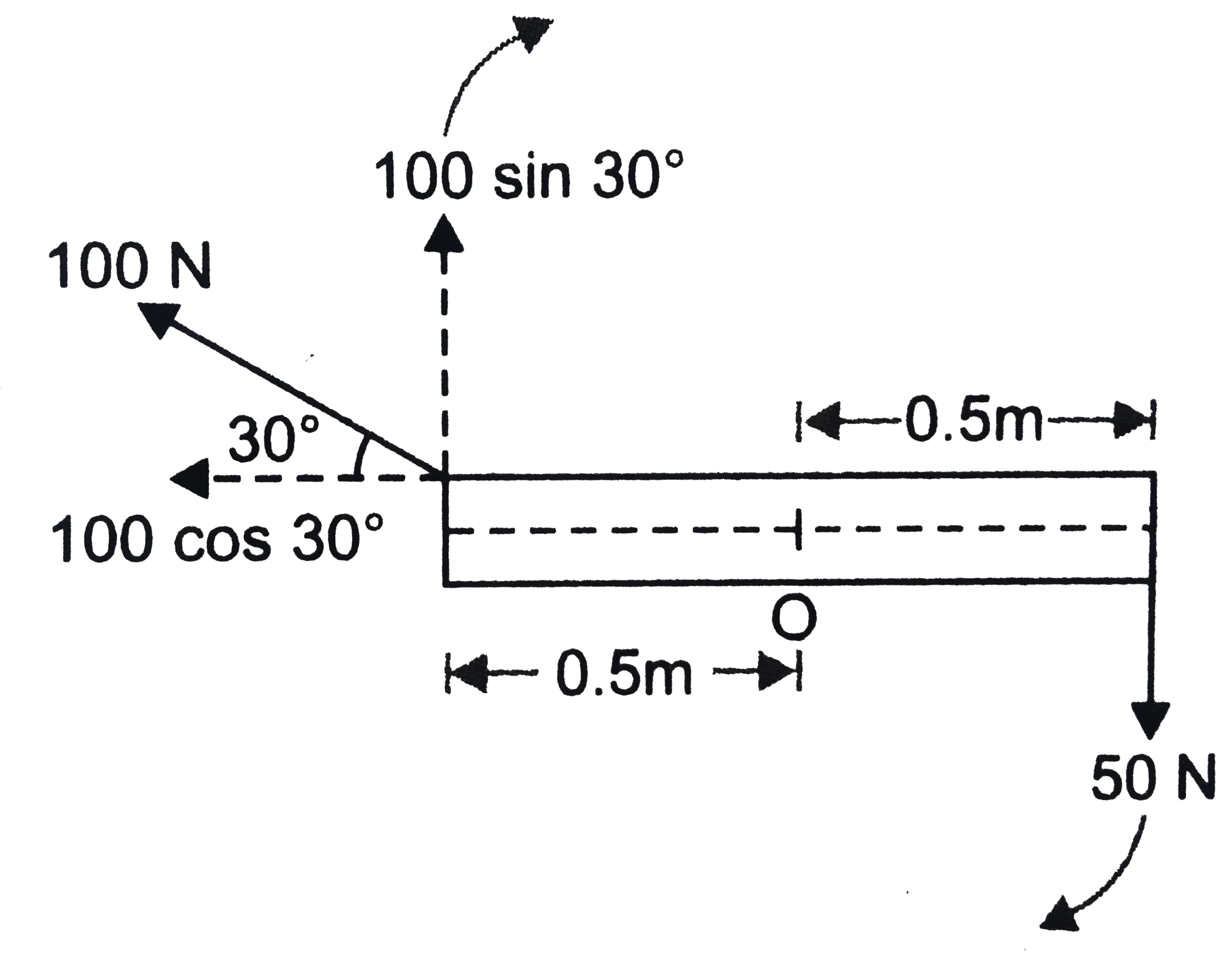(a) Prove the theorem of perpendicular axes.
(Hint : Square of the distance of a point (x, y) in the x-y plane from an axis through the origin and perpendicular to the plane is (x2+y2).
(b) Prove the theorem of parallel axes.
(Hint : If the centre of mass of a system of n particles is chosen to be the origin ∑miri=0).
Step by step video & image solution for (a) Prove the theorem of perpendicular axes. (Hint : Square of the distance of a point (x, y) in the x-y plane from an axis through the origin and perpendicular to the plane is (x^(2)+y^(2)). (b) Prove the theorem of parallel axes. (Hint : If the centre of mass of a system of n particles is chosen to be the origin summ_(i)r_(i)=0). by Physics experts to help you in doubts & scoring excellent marks in Class 11 exams.
Updated on:21/07/2023Topper's Solved these Questions
- SYSTEMS OF PARTICLES AND ROTATIONAL MOTIONBOOK - PRADEEPCHAPTER - SYSTEMS OF PARTICLES AND ROTATIONAL MOTIONEXERCISE - QUESTIONS
15 Videos
- SYSTEMS OF PARTICLES AND ROTATIONAL MOTIONBOOK - PRADEEPCHAPTER - SYSTEMS OF PARTICLES AND ROTATIONAL MOTIONEXERCISE - VALUE BASED QUESTIONS
5 Videos
- SYSTEMS OF PARTICLES AND ROTATIONAL MOTIONBOOK - PRADEEPCHAPTER - SYSTEMS OF PARTICLES AND ROTATIONAL MOTIONEXERCISE - NCERT
21 Videos
- RAY OPTICSBOOK - PRADEEPCHAPTER - RAY OPTICSEXERCISE - Problem For Practice(a)
25 Videos
- THERMODYNAMICSBOOK - PRADEEPCHAPTER - THERMODYNAMICSEXERCISE - Assertion- Reason Type Questions
19 Videos
Similar Questions
Two forces 50Nand100N are acting on a rod capable of rotating it about O as shown in Fig. What is the net torque acting on the rod ?

View SolutionThe mechanical energy (E) of a body is the sum of kinetic energy (K) and potential energy (V) of the body i.e., E=K+V. Whereas K is always positive, V can be positive or negative. For a system to axis, K=(E−V)≥0
Negative value of E indicates a bound state. For example, all planets revolving around the sum have negative mechanical energy.
Read the above passage and answer the following questions :
(i) When mechanical energy E=0, does it mean K=0andV=0 ?
(ii) What is the implication of this study in day to day life ?
View SolutionGiven the location of the centre of mass of a (i) sphere, (ii) cylinder, (iii) ring, and (iv) cube, each of uniform mass density. Does the centre of mass of a body necessarily lie on the body ?
View SolutionLight of wavelength 6000Å falls on a plane reflecting surface. What are the wavelength and frequency of reflected light. If angle between incident ray and reflected ray is 60∘, what is the angle of incidence ?
View SolutionAssertion : Internal energy of an ideal gas does not depend upon volume of the gas.
Reason : This is because internal energy of ideal gas depends only on temperature of gas.
View Solution(a) Prove the theorem of perpendicular axes.
(Hint : Square of the distance of a point (x, y) in the x-y plane from an axis through the origin and perpendicular to the plane is ^(x2)+y2).
(b) Prove the theorem of parallel axes.
(Hint : If the centre of mass of a system of n particles is chosen to be the origin ∑miri=0).
View SolutionThe perpendicular distance of the origin from the plane which makes intercepts 12,3 and 4 on X, Y, and Z-axes respectively, is
View Solutionलम्बवत्- अक्षों के प्रमेय की उपपत्ति करें [संकेतः (x, y) तल के लम्बवत् मूल बिन्दु से गुजरती अक्ष से किसी बिन्दु x-y की दूरी का वर्ग (x2+y2) है।
View Solutionलम्बवत् अक्षों के प्रमेय की उपपत्ति करें। [संकेतः (x,y) तल के लम्बवत् मूल-बिन्दु से गुजरती अक्ष से किसी बिन्दु x-y की दूरी का वर्ग (x2+y2) है।
View Solutionसमांतर अक्षों के प्रमेय की उपपत्ति करें [संकेत : यदि द्रव्यमान केन्द्र को मूल-बिन्दुले लिया जाय तो Σmiri=0
View SolutionIf a plane makes intercepts 2,2,1 on X-,Y- and Z- axes respectively, then its perpendicular distance from the origin is
View Solutionperpendicular distance of the origin from the plane which makes intercepts 12,6and4 on X,Y,Z axes respectively, is :
View SolutionBy the theorem of perpendicular axes, if a body be in X-Z-plane then :-
View SolutionThe perpendicular distance from the origin to the plane x+y+Z+3=0 is
View Solution(a) लंबवत अक्षों के प्रमेय की उपपत्ति करें | (संकेत - (x,y) तल के लंबवत मूल बिंदु से गुजरती अक्ष से किसी बिंदु x - y की दूरी का वर्ग (x2+y2) है |
(b) समांतर अक्षों के प्रमेय की उपपत्ति करें | (संकेत - यदि द्रव्यमान केंद्र को मूल बिंदु ले लिया जाये हो ∑m1r1=0 )
View Solution(a) Prove the theorem of perpendicular axes. (b) Prove the theorem of parallel axes.
View Solution

